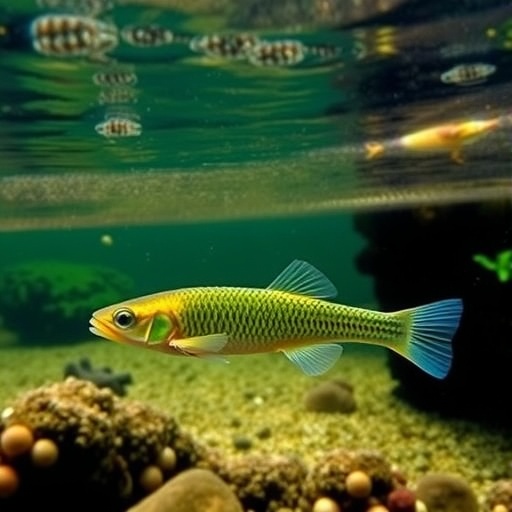In a remarkable turn of events, recent studies have unveiled the potential rediscovery of the critically endangered Sahara killifish, scientifically known as Apricaphanius saourensis, in Algeria. Once thought to be lost to extinction, this resilient species has captured the attention of conservationists and biologists alike. The implications of this finding are monumental, not just for the species itself but also for the broader ecosystem dynamics in the North African region. The Sahara killifish, a small and vibrant freshwater fish, is endemic to the Saharan region, making its survival critical for maintaining the biological diversity of this unique habitat.
The landscape of Algeria, marked by arid deserts and scarce water resources, poses significant challenges for aquatic life. The habitat of the Sahara killifish has faced drastic changes due to climate factors and human activities. Over the years, the encroachment of agriculture into wetland areas and the exploitation of water resources have led to a sharp decline in populations of many native fish species. However, new findings suggest that the Sahara killifish may be clinging to life in isolated pockets of water, defying expectations and bringing hope to conservationists worldwide.
The rediscovery process is anchored in robust scientific methods, involving extensive field surveys and community engagement. Researchers, led by Tahri et al., undertook a systematic exploration of both historical and contemporary sites where the killifish was previously documented. These surveys were aimed not just at locating the fish but also at understanding the ecological conditions that facilitate its survival. The application of environmental DNA (eDNA) technology has proven invaluable in this endeavor, allowing researchers to detect traces of the fish’s genetic material in water samples even when individuals are not visually observed.
An essential aspect of the Sahara killifish’s biology is its remarkable adaptability to harsh environmental conditions. This species is known for its ability to endure high salinity and temperature extremes, contributing to its historical resilience in the Sahara’s fluctuating climate. Understanding these adaptive traits is crucial for developing conservation strategies that can enhance the species’ chances of survival in an ever-changing environment. The potential rediscovery of this fish raises questions about what ecological niches it occupies and how it manages to thrive where other species have succumbed.
Moreover, the rediscovery holds a mirror to the broader environmental changes occurring in the Sahara and North Africa. The findings reflect pressing issues such as water scarcity and habitat loss, which are increasingly exacerbated by climate change. Despite these adversities, the Sahara killifish’s potential return serves as a reminder of the area’s rich biological heritage, illustrating the importance of conservation efforts in preserving not just individual species but entire ecosystems.
Collaborative efforts among local communities, scientists, and governmental agencies are paramount in securing the future of this species. The study highlights the importance of involving local stakeholders in conservation processes, recognizing that indigenous knowledge can be instrumental in identifying critical habitats and practices that foster biodiversity. By combining scientific research with local expertise, the project aims to create a
Tags: Apricaphanius saourensis conservationaquatic life in arid regionsbiodiversity in North Africaclimate impact on fish populationsconservation strategies for aquatic habitatscritically endangered fish speciesecological significance of killifishendangered species recovery effortshabitat challenges for freshwater fishpreserving biological diversity in desertsSahara killifish rediscoverywetland conservation in Algeria






